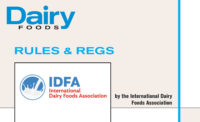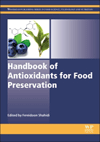Consumers are demanding more information about how their food is produced so they can make informed choices about what to eat and what to feed their families. Top of mind for some consumers is whether the food or its ingredients were derived from bioengineered (BE) crops, also known as genetically engineered or genetically modified (GM) crops.
Today, 90% of soybeans, cotton and corn are BE crops, which are more insect-resistant or herbicide-tolerant than conventional crops. Many ingredients used in dairy products could be derived from BE crops, including cornstarch, high-fructose corn syrup, sugar from sugar beets, soybean oil and soy lecithin, so the stakes — and opportunities — for our industry are high.
That’s why we supported the law passed in 2016 that required USDA to create a national mandatory labeling standard for BE foods or foods with BE ingredients. In May, USDA’s Agricultural Marketing Service issued a proposed rule with several options to determine what foods will be covered and what the disclosures should look like. Thousands of stakeholders, including the International Dairy Foods Association (IDFA), weighed in with comments.
For example, USDA sought input on how to define “bioengineered food” and questioned whether all foods and ingredients produced from bioengineering should be included, or if highly refined ingredients derived from BE crops but further processed to remove the recombinant DNA should be excluded. IDFA believes it’s important to disclose highly refined ingredients derived from BE sources to address consumer expectations for full transparency.
Good news for dairy
Most import to the dairy industry: Congress provided clear statutory intent that food from animals, including milk, is not subject to the disclosure requirements solely because the animals consumed feed from a BE substance such as corn silage or soybean meal. Additionally, Congress acknowledged that certified organic foods would be exempt.
IDFA confirmed these two points in our comments, adding that enzymes, incidental food additives and food from animals treated with drugs or pharmaceuticals from a BE substance should be exempt as well.
USDA also asked about the best ways to inform consumers. IDFA recommended consumer research to find the most appropriate term (BE? GE? GMO?) for disclosure. We added that companies should be allowed to disclose additional voluntary information beyond the requirements.
USDA also requested input on three proposed symbols that could be used on food labels. IDFA said the symbol options needed revision to ensure they were neutral, objective and nondisparaging to BE technology. We also suggested using text with the symbol to make it easier for consumers to understand.
Electronic and digital links such as “SmartLabel” are already in place and can easily provide the required BE information, so we support their use. These links allow consumers to use smartphones to scan on-package QR codes for detailed product information.
No harmony with Nutrition Facts
When will we see these disclosures in the grocery aisle? Based on the volume of comments USDA received by the July 3 deadline, probably not any time soon. USDA attempted to harmonize compliance dates for the disclosure with FDA’s compliance date for the Nutrition Facts label changes, which is Jan. 1, 2020, but it’s unlikely that the department will complete the final regulation until later this year.
IDFA recommended a compliance date set 24 months after the final rule takes effect and said companies should be able to use up existing food labels for 24 months following the compliance date to reduce associated costs.
We believe it’s important to provide both the foods and the information that consumers want, so IDFA and the dairy industry eagerly await USDA’s final regulation.





